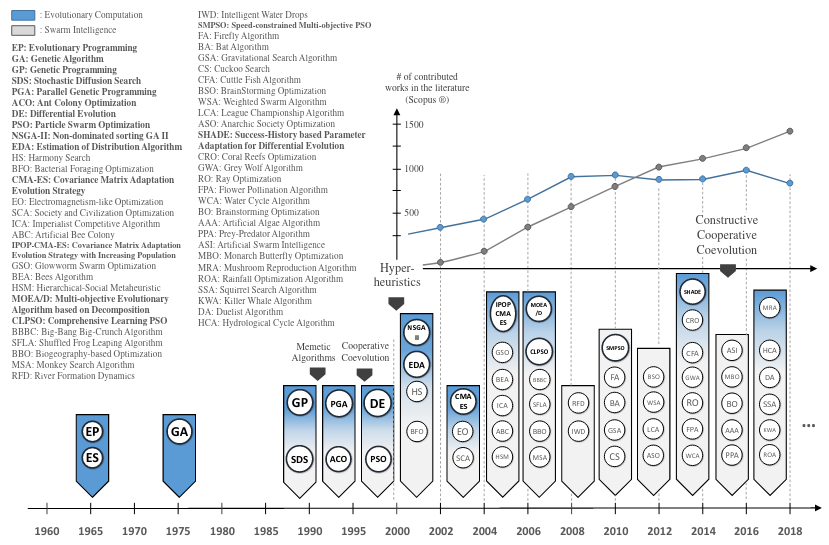Del Ser et al: Bio-inspired computation
Metadata
Title: Bio-inspired computation: Where we stand and what’s next
Authors: Del Ser et al
Publication Year: 2019
Journal: Swarm and Evolutionary Computation
Assigned in: cm3020 Topic 01: Genetic Algorithms
Published Abstract
In recent years, the research community has witnessed an explosion of literature dealing with the mimicking of behavioral patterns and social phenomena observed in nature towards efficiently solving complex computational tasks. This trend has been especially dramatic in what relates to optimization problems, mainly due to the unprecedented complexity of problem instances, arising from a diverse spectrum of domains such as transportation, logistics, energy, climate, social networks, health and industry 4.0, among many others. Notwithstanding this upsurge of activity, research in this vibrant topic should be steered towards certain areas that, despite their eventual value and impact on the field of bio-inspired computation, still remain insufficiently explored to date. The main purpose of this paper is to outline the state of the art and to identify open challenges concerning the most relevant areas within bio-inspired optimization. An analysis and discussion are also carried out over the general trajectory followed in recent years by the community working in this field, thereby highlighting the need for reaching a consensus and joining forces towards achieving valuable insights into the understanding of this family of optimization techniques.
Argument
The paper argues that the field has been distracted by debates around whether recent work on bio-inspired optimisation is novel or relevant. It tries to review the current state of the art to give a fresh foundation and consensus for the field to progress.
Summary and Key Sections
The article reviews the history of the field, the current state and challenges of several sub-fields, and then the general issues and research niches currently occupied.
Beyond the genetic algorithms covered elsewhere in the module, the paper highlights the developent of Swarm Intelligence, “a branch of bio-inspired computation based on the emergence of collective intelligence from large populations of agents with simple behavioral patterns for communication and interaction”. This has been an area of explosive growth in recent years, with many models and algorithms based on taking inspiration from animal colonies like ants and bees.
It also introduces Memetic algorithms that exemplify hybrid approaches taking a global optimization approach that is bio-inspired, and a more local search process tailored to the particular problem. It presents the following timeline of the field:

It describes how a lot of attention has been paid recently to understanding the landscape of the problem, and search efficiency. It laments the lack of solid mathematical theory behind recent SI work, saying there is too much on the empirics and reporting of “look, it’s working” results.
The paper reviews recent work in various subproblems in a lot of detail, more than is needed for the module. Of these perhaps section 3.9 on mimetic algorithms (p. 31 of the preprint) is the most applicable, they extend genetic algorithms by introducing local search. They are controversial in the GA community, but are a prolific area within Operations Research.
Section 3.14 (p. 43 of the preprint) is also of interest, it summarises some actual applications of these algorithms, including social network analysis, health diagnostic tools, cybersecurity, and video games, where bio-inspired algorithms drive procedural content generation, bot generation, and virtual players.
The paper concludes with some areas of opportunity for the field, including collaboration with ML, applications in VR/AR, and new theoretical directions.